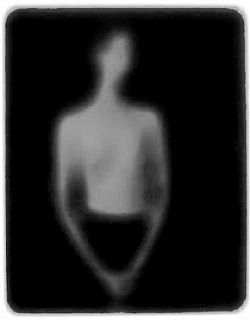
Bill Jacobson
Encyclopedia

United States
The United States of America is a federal constitutional republic comprising fifty states and a federal district...
photographer. He received a BFA from Brown University in 1977 and an MFA from the San Francisco Art Institute
San Francisco Art Institute
San Francisco Art Institute is a school of higher education in contemporary art with the main campus in the Russian Hill district of San Francisco, California. Its graduate center is in the Dogpatch neighborhood. The private, non-profit institution is accredited by WASC and is a member of the...
in 1981.
Works
Jacobson began his signature out of focus images in 1989. After exhibiting in a number of group exhibitions, in 1993 he had his first New YorkNew York City
New York is the most populous city in the United States and the center of the New York Metropolitan Area, one of the most populous metropolitan areas in the world. New York exerts a significant impact upon global commerce, finance, media, art, fashion, research, technology, education, and...
solo show at New York University
New York University
New York University is a private, nonsectarian research university based in New York City. NYU's main campus is situated in the Greenwich Village section of Manhattan...
’s Grey Art Gallery. Entitled Interim Figures, these shadowy pale photographs evoke the loss experienced by so many during the height of the AIDS epidemic. With their blurred human subjects, they indicate the futility of capturing true human likeness in both portraiture and memory.
Jacobson’s subsequent Song of Sentient Beings (1994-1995) continues his interest in the defocused figure. In contrast to the bleached luminosity of his prior work, these images depict deep black backgrounds enveloping ghostly figures which bend, sleep, stretch and howl. His next body of work, Thought Series (1996-1998) is a nearly monochromatic deep-black evocation of the flow of life. Photographing a broad spectrum of subjects from tightly cropped faces to fields of grass and surfaces of water, Jacobson deliberately links the human figure to nature, suggesting their constant but subtle connections. bill jacobson 1989-1997, published by Twin Palms in 1998, is a survey of work from this nine year period.
Influenced by a trip to India
India
India , officially the Republic of India , is a country in South Asia. It is the seventh-largest country by geographical area, the second-most populous country with over 1.2 billion people, and the most populous democracy in the world...
in 1999, Jacobson retained the out of focus but shifted to color, photographing both urban and rural landscapes in Untitled (1999-2001) and New Year’s Day (2002-2003). The work parallels an inner journey through a world we are constantly experiencing with the uncertainty of the mind’s eye rather than the sharp clarity of a camera lens. A monograph of this work, simply called "Photographs", was published by Hatje Cantz in 2005 and includes an extensive essay by the noted photographic historian Eugenia Parry.
Since 2003 he has worked with a variety of themes, in color and in focus, all the while retaining his meditation on the human passage through the world. Jacobson’s third monograph, A Series of Human Decisions, includes work from 2005-2009, as well as an interview between the artist and Ian Berry, curator at the Tang Museum. This series depicts a wide range of intimate, focused places from the real world, emphasizing the complexities of spaces and objects that people both create and encounter on a daily basis. The geometry found in these man-made places is echoed in Some Planes, a series of desert landscapes from 2007-2008.
More recently, Jacobson has been exploring a new body of work he’s titled Place (Series). They are minimal still-lives, and are the result of placing rectangles of various sizes in a variety of both man-made and natural settings. They suggest both a variety of architectures and the contradictions between architecture and nature. Inherent in this work is the dialogue between the ‘abstract’ and the ‘real’, an idea similarly present in his earlier, out-of-focus images. There are also notions of the infinite, echoing the very white and very dark portraits Jacobson began twenty years ago.

